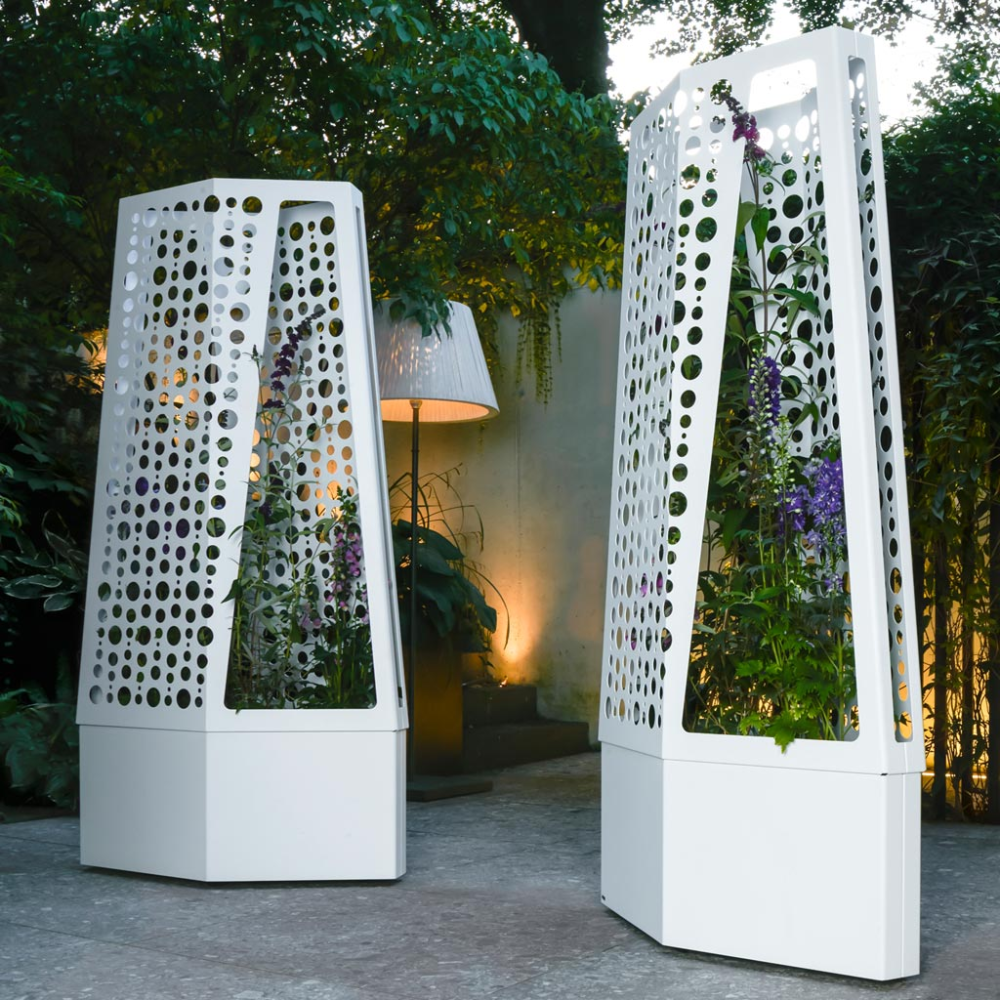Trellis Air is revolutionizing air conditioning technology with a groundbreaking approach to membrane dehumidification. As climate change drives temperatures higher, this Harvard startup offers a vital solution designed to significantly reduce the energy consumption associated with traditional cooling methods. By utilizing a unique membrane system that resembles a coffee filter, Trellis Air efficiently extracts moisture from the air, resulting in a cooler and drier environment without the hefty energy costs. This innovative method not only combats the projected 40 percent increase in air conditioning demand by 2030 but also addresses the alarming greenhouse gas emissions produced by conventional systems, which currently account for 4 percent of global emissions. With Trellis Air at the forefront of energy-efficient cooling solutions, the future of sustainable climate control is brighter than ever.
Trellis Air represents a new frontier in innovative climate solutions, leveraging advanced technology to enhance moisture removal and optimize cooling processes. As a pioneering venture emerging from Harvard, this startup focuses on redefining how buildings maintain comfortable environments without sacrificing energy efficiency. With a unique system that functions similarly to a high-performance dehumidifier, Trellis Air aims to empower air conditioning systems to operate more effectively. This method promises to transform existing air cooling technologies, making them more compatible with the demands of a warming planet. As climate challenges grow, the inventive spirit showcased by Trellis Air offers hope for a sustainable response to rising temperatures and environmental concerns.
Introduction to Trellis Air and Membrane Dehumidification
Trellis Air represents a groundbreaking solution in the battle against climate change, utilizing innovative membrane dehumidification technology. Unlike the conventional air conditioning systems which are notorious for their energy inefficiency, Trellis Air implements a unique approach that operates similarly to a coffee filter, allowing it to effectively separate moisture from the air. This process not only cools the air but does so in a way that significantly reduces energy consumption—key in a world where air conditioning demand is projected to rise dramatically as global temperatures increase.
The technology emerging from Trellis Air has the potential to revolutionize air conditioning technology across various sectors. With traditional refrigerants contributing heavily to greenhouse gas emissions, the need for energy-efficient cooling systems has never been more critical. Trellis Air’s membrane-based method offers a promising alternative that engenders less environmental impact while efficiently dehumidifying and cooling indoor spaces.
The Climate Change Challenge and Air Conditioning Demand
As global temperatures rise due to climate change, the demand for effective and energy-efficient cooling solutions is expected to increase significantly. Current projections indicate that air conditioning needs could soar by as much as 40% by 2030, resulting in higher energy consumption and greenhouse gas emissions. This alarming trend highlights the urgency for solutions like Trellis Air, which aims to mitigate the climate crisis by innovating how we cool our indoor environments.
Notably, air conditioning systems contribute to about 4% of global greenhouse gas emissions—quite a substantial figure when you consider that it surpasses emissions from global air travel. This stark reality necessitates the development of more sustainable cooling alternatives that not only address the current demand but also pave the way for a future that prioritizes climate-friendly technologies.
Working Beyond the Status Quo in Cooling Technology
The traditional air conditioning industry has largely relied on vapor-compression technology, which has seen little innovation for over a century. Trellis Air’s approach breaks this mold by resurrecting the concept of membrane dehumidification, a method that has struggled to find success in the past due to material limitations. By employing advanced materials and engineering breakthroughs, Trellis Air offers a novel solution that promises higher efficiency and lower energy consumption.
Peteris Lazovskis, a pivotal researcher at Trellis Air, emphasizes the importance of innovation in the face of increasing cooling demands. With a focus on separating water vapor from air using their specialized membrane, the potential to enhance system stability and performance is immense. Trellis Air stands at the forefront of this paradigm shift, offering a sustainable alternative that could redefine the landscape of air conditioning technology.
The Science Behind Trellis Air’s Membrane Technology
The cornerstone of Trellis Air’s innovation is its proprietary membrane, ingeniously designed to separate water vapor from the air without the high energy costs associated with traditional methods. Researchers at Harvard developed this membrane after extensive trials, ensuring it meets the rigorous demands required for commercial viability. This technology not only operates on a lower energy footprint but also enhances the stability and efficiency of the air conditioning systems it complements.
In stark contrast to conventional dehumidifiers, which require considerable energy to both cool and heat the air, Trellis Air’s system streamlines the process. It eliminates the need for refrigerants, which pose a global warming risk, making it a greener option in tackling the needs of humid climates where cooling is vital. The future of air conditioning lies in innovations such as Trellis Air, making sustainable air management possible.
Pathways to Commercialization for Trellis Air
Trellis Air’s journey from academic research to marketable technology involves pursuing multiple pathways for commercialization. One avenue includes replacing existing desiccant systems in industrial applications with Trellis Air’s more energy-efficient solution. Additionally, there are plans to market its technology as an innovative pre-drying module that enhances the efficiency of conventional air conditioners. This strategic approach positions Trellis Air to exploit a lucrative market opportunity against the backdrop of rapidly escalating energy demands related to cooling.
With an emphasis on scaling their product, Trellis Air is already engaged in real-world testing to validate its technology. Critical pilot studies and collaborations with institutions like Harvard’s Center for Green Buildings and Cities showcase the practical advantages of their membrane-based system under various climatic conditions. Such advancements not only underscore Trellis Air’s commitment to innovation but also aim to significantly lower energy needs and emissions from cooling by proving the technology’s effectiveness.
Impact of Innovative Air Conditioning Solutions on Sustainability
The quest for energy-efficient cooling solutions like Trellis Air’s membrane technology carries significant implications for sustainability. As nations strive to meet climate targets, reducing the energy consumption associated with air conditioning becomes paramount. By offering a system that utilizes less energy and emits lower greenhouse gases, Trellis Air stands to make a profound impact on the way buildings are climate-regulated, contributing to sustainability goals across various sectors.
Transitioning toward such innovative technologies is crucial as the world grapples with the effects of climate change. With air conditioning consuming a large portion of energy in urban settings, solutions like Trellis Air that marry cutting-edge science with practical engineering can help forge a path toward a greener future. This not only fulfills a pressing demand for cooling but does so with a commitment to preserving the planet for future generations.
Collaboration and Development: A Harvard Ecosystem
Trellis Air is a product of collaborative innovation, drawing expertise from various departments within Harvard University. This integration of science and engineering has been fundamental in developing the advanced membrane technology and associated systems that Trellis Air offers. The interdisciplinary approach taken by the team at Harvard—comprising architecture, materials science, and engineering—underscores the importance of collaboration in overcoming technological challenges in tackling climate change.
By partnering with institutions like the Wyss Institute and the Department of Energy, Trellis Air has secured not only funding but critical insights into making their technology scalable. The collaboration among researchers, entrepreneurs, and advisors showcases how academic innovation can translate into commercially viable products, further emphasizing the role of education and research institutions in creating practical climate change solutions.
Trellis Air’s Role in the Future of Climate Control
Looking ahead, Trellis Air positions itself as a leader in redefining climate control through its innovative approach to dehumidification. With air conditioning needs expected to escalate worldwide, the introduction of a highly energy-efficient alternative is both timely and necessary. By focusing on creating systems that consume less energy while offering superior performance, Trellis Air may set new standards in the cooling industry.
The challenge remains substantial; however, the bold ambitions of Trellis Air to integrate their technology into existing cooling systems represent a promising step forward. As public and private sectors alike turn their attention to sustainable solutions, Trellis Air has the potential to drive considerable advancements in air conditioning technology, fostering a future where comfort and environmental responsibility coexist.
Final Thoughts on Trellis Air and its Contribution to Air Conditioning Technology
In summary, Trellis Air stands at a pivotal moment in the evolution of air conditioning technology, underscored by its commitment to addressing the pressing climate challenges of our time. By harnessing the power of membrane dehumidification, Trellis Air not only meets an urgent market demand but also contributes significantly to reducing greenhouse gas emissions. This innovative approach offers a dual benefit—providing comfort while prioritizing environmental sustainability.
If Trellis Air succeeds in scaling its technology across various markets, it could lead a significant shift in how air conditioning is approached globally. With an understanding of the vital intersection between innovation and environmental preservation, Trellis Air exemplifies what is possible when science, engineering, and bold entrepreneurial vision come together.
Frequently Asked Questions
What is Trellis Air and how does it relate to membrane dehumidification?
Trellis Air is an innovative startup from Harvard that specializes in advanced air conditioning technology, specifically utilizing membrane dehumidification. This novel approach involves using a unique membrane to separate water vapor from air, effectively reducing the energy required for cooling compared to traditional air conditioning methods.
How does Trellis Air’s technology address climate change solutions?
Trellis Air provides a climate change solution by significantly reducing the energy consumption associated with air conditioning. Traditional systems contribute to global greenhouse gas emissions, and with Trellis Air’s energy-efficient cooling technology, the reliance on traditional refrigerants is diminished, helping reduce the industry’s overall environmental impact.
What makes Trellis Air different from conventional air conditioning technology?
Trellis Air differs from conventional air conditioning technology by employing a membrane-based system that mimics the function of a coffee filter. This innovative design allows for efficient drying and cooling of air with considerably less energy compared to traditional vapor-compression systems, which have remained largely unchanged for over a century.
What are the potential applications of Trellis Air’s membrane dehumidification technology?
Trellis Air’s membrane dehumidification technology has several potential applications including replacing desiccant systems in industrial settings, upgrading basement dehumidifiers, and integrating with air conditioners globally to enhance their efficiency. This technology can improve the energy efficiency of cooling systems across various sectors.
How does Trellis Air plan to commercialize its innovative air conditioning technology?
Trellis Air plans to commercialize its air conditioning technology by developing a ‘pre-drying module’ that improves the energy efficiency of existing air conditioning units. By demonstrating the effectiveness of their prototype in real-world conditions, they aim to build partnerships and attract funding to scale their product.
What are the benefits of using Trellis Air’s dehumidification system over traditional systems?
The benefits of using Trellis Air’s dehumidification system include significantly lower energy consumption, reduced greenhouse gas emissions, and improved performance compared to traditional air conditioning systems. This innovative technology not only enhances comfort but also contributes to broader climate change solutions.
Who are the key figures involved in the development of Trellis Air’s technology?
Key figures behind Trellis Air’s technology include Jonathan Grinham, an assistant professor at Harvard, and Russ Wilcox, the CEO of the startup. The team includes researchers from Harvard’s Aizenberg Lab and has received support from the Wyss Institute for Biologically Inspired Engineering, indicating a strong interdisciplinary collaboration.
Why is Trellis Air considered a promising startup in the field of energy-efficient cooling?
Trellis Air is considered promising due to its innovative membrane technology that drastically lowers energy requirements for air cooling. As global demand for cooling increases due to climate change, Trellis Air’s solutions could significantly reduce energy use in this sector, presenting a strong market opportunity and potential to disrupt traditional air conditioning technology.
| Key Points | Details |
|---|---|
| Introduction to Trellis Air | A startup from Harvard University focused on innovative cooling technology. |
| Environmental Impact | Cooling systems contribute to 4% of global greenhouse gas emissions, doubling that of air travel. |
| Innovation | Utilizes a unique membrane to efficiently extract moisture from air, significantly reducing energy consumption compared to traditional methods. |
| Collaboration | Developed through teamwork between scientists and engineers at Harvard’s SEAS and other institutes. |
| Commercial Potential | Three commercialization pathways: industrial desiccant replacements, efficient home dehumidifiers, and integration with air conditioners. |
| Testing and Development | Prototypes tested in real-world environments to validate effectiveness, including at Harvard’s HouseZero. |
Summary
Trellis Air is poised to revolutionize the air conditioning industry by providing a sustainable and efficient alternative to traditional methods. With its innovative membrane technology, Trellis Air significantly decreases the energy required for cooling, which is crucial as global temperatures rise and the demand for HVAC systems increases. Through rigorous testing and collaboration with leading experts, Trellis Air is not only addressing the pressing challenge of energy consumption but also tackling the overarching issue of climate change. As a result, Trellis Air’s advancements could redefine industry standards and lead to a greener future.



